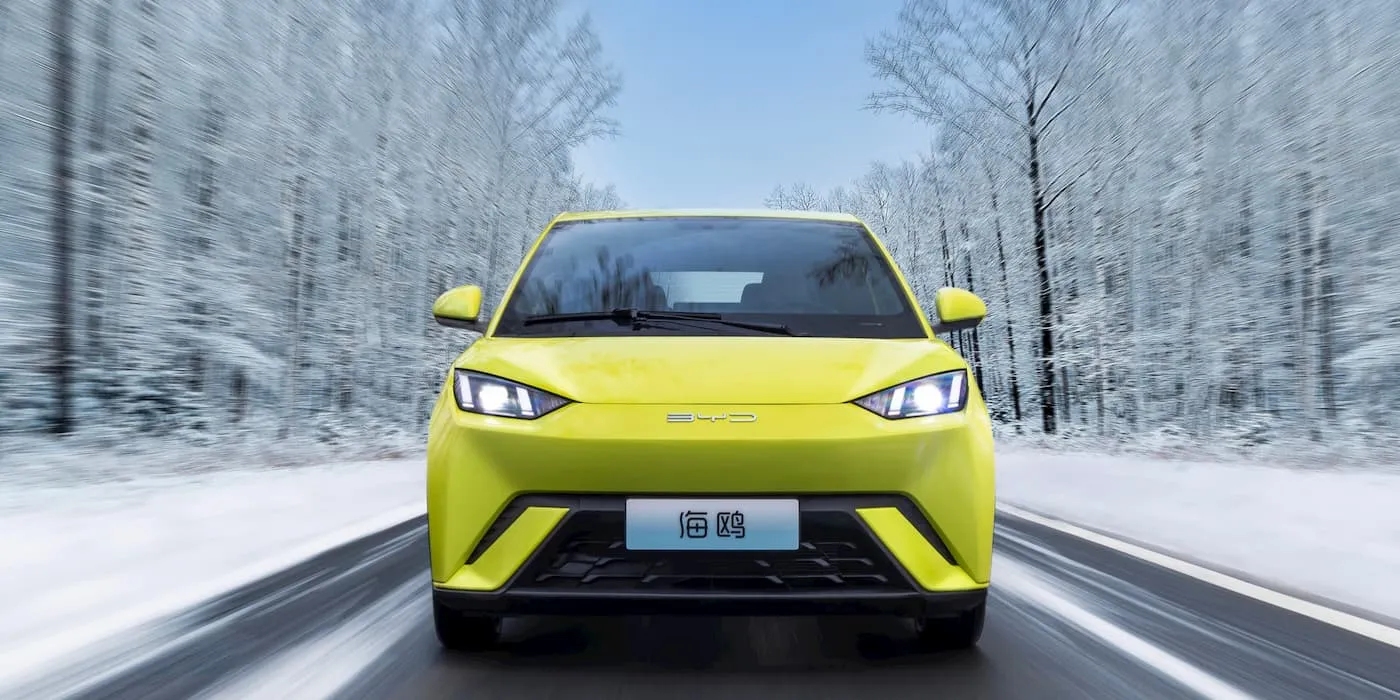The BYD Seagull, a compact electric vehicle from China, is making waves in the automotive industry by offering a price point that is over 50% lower than the average cost of new cars in the U.S. With a base price of around $7,800, this EV is challenging American automakers to rethink their pricing strategies and production methods.
Key Takeaways
-
The BYD Seagull is priced at approximately $7,800 in China, significantly lower than the average U.S. car price of $47,962.
-
The Seagull offers a range of up to 252 miles on a single charge, making it suitable for urban commuting.
-
U.S. tariffs on Chinese imports currently prevent the Seagull from entering the American market.
-
The vehicle’s minimalist design focuses on efficiency, contributing to its low cost.
The Rise of Affordable EVs
The BYD Seagull is part of a broader trend in the electric vehicle market, where affordability is becoming a key selling point. As traditional automakers struggle with high production costs, BYD has managed to keep prices low through vertical integration and efficient manufacturing processes.
-
Price Comparison: The cheapest new car in the U.S., the Nissan Versa, starts at $18,330, while the average used car price is around $25,006.
-
Battery Options: The Seagull comes with two battery options: a 30.1 kWh battery providing a 190-mile range and a 38.9 kWh battery offering a 252-mile range.
Design & Features
Despite its low price, the Seagull does not compromise on quality. It features a compact five-door hatchback design and includes essential safety features such as airbags and electronic stability control. The vehicle’s weight is significantly lower than many competitors, allowing for better efficiency and range.
-
Weight: Weighing in at 2,734 pounds, the Seagull is about 900 pounds lighter than the Chevrolet Bolt, enhancing its performance and efficiency.
-
Design Efficiency: The car’s design includes cost-saving features, such as a single windshield wiper, which reduces both weight and manufacturing costs.
Battery Technology & Efficiency
The Seagull EV is making waves, and a lot of that has to do with what’s under the hood – or, more accurately, under the floor. BYD’s Blade Battery is a big deal. It’s designed to be safer and more space-efficient than traditional EV batteries. This means more range in a smaller package, which is exactly what you want in an affordable EV. The BYD Blade Battery is also supposed to be more durable, lasting longer and holding its charge better over time. That’s a win for consumers and the environment.
-
Enhanced safety features to prevent thermal runaway.
-
Higher energy density for extended driving range.
-
Longer lifespan compared to conventional lithium-ion batteries.
Safety Features & Ratings
Safety is a big deal, no matter what you’re driving. And BYD seems to be taking it seriously with the Seagull. It’s packed with features you’d expect in a more expensive car, like airbags, stability control, and advanced driver-assistance systems (ADAS). These systems can help prevent accidents and make driving safer for everyone. While official safety ratings might not be out yet for 2025, the expectation is that the Seagull will perform well in crash tests.
-
Comprehensive airbag system for occupant protection.
-
Electronic Stability Program (ESP) for enhanced control.
-
Advanced Driver-Assistance Systems (ADAS) for collision avoidance.
Here’s a quick look at some expected safety features:
|
Feature |
Description |
|---|---|
|
Automatic Emergency Braking |
Detects potential collisions and applies brakes automatically. |
|
Lane Departure Warning |
Alerts the driver if the vehicle drifts out of its lane. |
|
Blind Spot Monitoring |
Warns the driver of vehicles in their blind spot. |
|
Adaptive Cruise Control |
Maintains a set speed and distance from the vehicle ahead. |
Challenges in the U.S. Market
While the Seagull presents a compelling case for affordable EVs, it faces significant barriers to entry in the U.S. market. Current tariffs on Chinese imports, which can reach up to 247.5%, make it economically unfeasible for BYD to sell the Seagull in America without substantial price increases.
-
Tariff Impact: The Biden administration’s recent decision to impose a 100% tariff on Chinese EVs further complicates the situation, making it unlikely for the Seagull to be sold in the U.S. anytime soon.
-
Regulatory Hurdles: U.S. safety standards are more stringent than those in China, which would require modifications to the Seagull, potentially increasing its cost.
Shifting Consumer Preferences
The BYD Seagull EV is poised to shake up consumer expectations, especially regarding price. Its affordability could make electric vehicles accessible to a much wider audience. People who previously thought an EV was out of reach might now seriously consider one. This shift could force other manufacturers to rethink their pricing strategies and focus on producing more budget-friendly models. It’s not just about price, though. The Seagull’s features and range will also play a role in shaping what consumers expect from an entry-level EV.
Influence on Other Manufacturers
BYD’s success with the Seagull will likely put pressure on other automakers to innovate and compete in the affordable EV segment. We might see:
-
More manufacturers developing smaller, more efficient EVs.
-
Increased investment in battery technology to lower costs.
-
A greater focus on emerging markets where affordability is key.
Market Trends in Electric Vehicles
The Seagull’s arrival could accelerate several existing trends in the EV market. For example, the increasing demand for smaller, more efficient vehicles. Also, the growing popularity of electric buses and other forms of electric transportation. And, of course, the ongoing shift towards EV battery plants and sustainable transportation solutions. The Seagull could also encourage more people to switch to EVs, especially in regions where price has been a major barrier. It will be interesting to see how the Seagull affects the overall market share of EVs and whether it leads to a faster adoption rate worldwide. The revenue that BYD is generating is a testament to their success.
Future Upgrades & Innovations
BYD isn’t resting on its laurels. They’re already planning future upgrades and innovations for the Seagull EV. This includes improvements to the battery technology, enhanced safety features, and even more advanced smart city capabilities. The goal is to keep the Seagull competitive and relevant in the rapidly evolving EV market. They are also working on the BYD Blade Battery to improve safety and performance.
-
Solid-state battery tech
-
Advanced driver-assistance systems (ADAS)
-
Bi-directional charging capabilities
Conclusion
The BYD Seagull is a significant player in the evolving landscape of electric vehicles, showcasing how affordability can be achieved without sacrificing quality. As American automakers face increasing pressure from low-cost competitors, the Seagull serves as a wake-up call to innovate and adapt to changing market demands. While it may not be available in the U.S. yet, its impact on the global EV market is undeniable, pushing the boundaries of what consumers can expect from electric vehicles.
Frequently Asked Questions
What is the price of BYD’s Seagull EV?
The BYD Seagull EV is priced around $12,000 in China, making it one of the most affordable electric vehicles available.
How does the Seagull compare to other electric cars?
The Seagull is much cheaper than many competitors, including Tesla’s Model 3, which is considered a more premium option.
What do customers think about the Seagull EV?
Consumer feedback has been mostly positive, with many praising its affordability and practicality for everyday use.
What kind of battery does the Seagull use?
The Seagull uses BYD’s advanced Blade Battery, known for being safe and efficient, which helps improve the vehicle’s overall performance.
How does BYD plan to expand the Seagull’s market?
BYD aims to enter new markets by forming partnerships and adapting its strategies to meet local demands.
What are the environmental benefits of the Seagull EV?
The Seagull is designed with eco-friendly manufacturing processes, and BYD is committed to recycling and responsible battery disposal.




